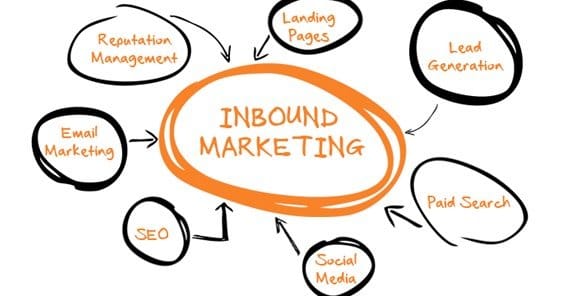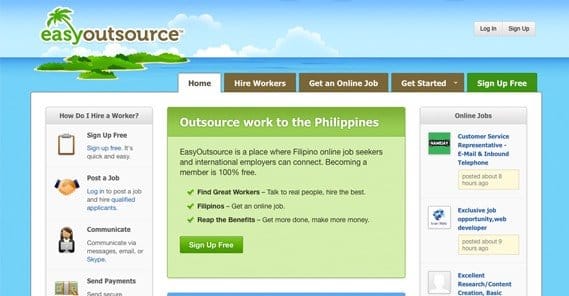How to Automate Your Inbound Marketing with Tools

How much of your marketing do you automate? Too many small business owners, entrepreneurs and startups all seem to think they need to do everything manually. I see it all the time; forsaking tools because they’re too small to make full use of them. Here’s the thing; there are tools specifically designed for small businesses. There are tools made for scalability, with packages ranging from free to enterprise. There are tools to do just about everything you could want to do, and you barely have to have a budget to put them to use.
The only problem, the only roadblock is the learning curve. Automation tools aren’t always user-friendly, and even when they are, they take a transition period to start up and get working. Be prepared for that, when you start putting these tools to use. Which you will, because they’re awesome.
What is Inbound Marketing?
The concept of dividing marketing into inbound and outbound is a relatively new one, springing up only in the last five or ten years. It’s an interesting division based on the actions of customers and marketers.
Inbound marketing, specifically, is all of the forms of content marketing designed to bring people to your site. It’s a very “if you build it they will come” mentality. Things like SEO, blogs, podcasts, videos and all types of content you post for consumption qualify. It applies to both free and paid content, so long as it’s content you provide to customers who come to you.
Note that with inbound marketing, you’re not going out and taking your content to the masses. You’re not going door to door with your pamphlets, asking people if they’ve heard the word about your mattress cleaning software. You have your content, and you let people come to you to experience it.
Savvy marketers already question the value of inbound marketing, and they’re right; alone, it’s not worth much. “If you build it, they will come” is not a valid marketing strategy. It’s more like “If you build it, they won’t know you exist, because someone else built it too and they’re advertising the fact that they built it and offering deals to people who come.” That’s just not as catchy.
What’s missing is the other half of the coin, the outbound marketing. Outbound marketing is the cold calling, the paid advertising, the flyers, the telemarketing, and so forth. It’s what you do to put yourself out there, to let users know your content exists. Without outbound marketing, inbound marketing holds no value. Conversely, without inbound marketing, outbound marketing is just selling people tickets to a show with no performer.
What Functions Can You Automate?
So now that you know what inbound marketing is in general, let’s take a look at the various functions you can automate. Utilizing software, as well as outsourced help (like from EasyOutsource.com), you can automate just about your entire inbound marketing campaign.
I can loosely break down inbound marketing into three categories. These categories are SEO, content production, and social media.
First, let’s take a look at SEO. What are the main aspects of SEO?
- Keyword awareness and research.
- Proper content construction.
- Proper site construction.
- Meta data creation and optimization.
- Link building.
There’s a heck of a lot more to SEO than just that, but these are the main points. So which of them can be automated?
Keyword research requires that you spend time brainstorming and investigating your industry. However, it’s a lot of up-front work and very little maintenance. For the most part, the general keywords in your industry aren’t changing. You can do a little basic automation by using research tools like WordStream rather than just Google searches, but that’s only the most basic level of automation.
Content creation cannot be automated. You can’t tell a machine to write a blog post, create a video, record a podcast or make an infographic. You can pay freelancers to do the work for you, through a hub like Upwork (formerly oDesk), but that’s not so much automation as outsourcing.
Site construction is another outsourced job, or up-front job, however you take it. Making a site design, optimizing it for SEO; it’s all a one-time task.
Meta data is the most important part to automate, and you don’t even have to. Writing a three-sentence description of your piece and an optimized title doesn’t take much, and it’s built in to most CMS platforms. Just use a plugin like Yoast for WordPress, or the equivalent for whatever you’re doing.
Link building is a complex task, but good content earns links on its own. Any automation you put into it is just enhancing your ability to make better content and broadcast it on a wider scale. You can’t automatically build links via comments or something; that’s spam, and will penalize your site.
The second aspect, content production, I covered under SEO’s content creation section. While there exist automated bots that spin content into presumably-unique text, it’s not beneficial to use them when you’re trying to be a legitimate business and legitimate blog. Avoid automating content production; outsource it instead.
This applies to all forms of content, including videos, infographics, ebooks, and all the rest. Don’t try to automate production. Get other people to do it for you for a fee.
The third section, social media, is where a lot of automation shines. Social media consists of posting, analysis, and audience building.
Posting, well, there are literally hundreds of tools out there for managing social media profiles. You can find platform-specific tools like Tweetdeck, or you can find general platforms like Buffer or HootSuite. Some will even help you manage your blog as well.
Analysis is built in to the sites you use. Facebook has Insights, Twitter has its analytics, and so forth. Learning how to read them – and creating custom reports whenever possible – is part of the process and will be unique to your business.
As for building an audience, a lot of that is just being consistent. Tools for posting will help you with that, as will learning what posts work the best with your audience. Again, it’s all about learning over time.

 ContentPowered.com
ContentPowered.com







